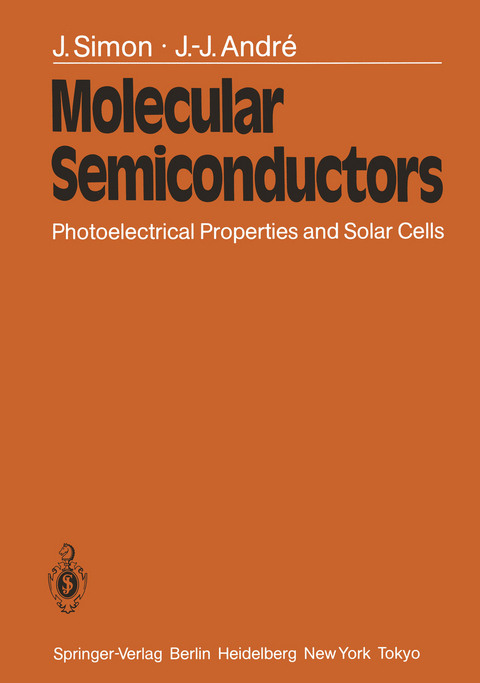
Molecular Semiconductors
Springer Berlin (Verlag)
978-3-642-70014-9 (ISBN)
I Basic Notions of Solid State Physics.- I.1 Dark Conductivity: Generalities.- I.2 Conduction in Metals: Drude and Sommerfeld Models.- I.3 Band Model of Conduction.- I.4 Limitations to Band Theory.- I.5 Hopping and Tunneling Mechanisms of Charge Migration.- I.6 Charge Carrier Trapping Processes.- II Photoelectric Phenomena in Molecular Semiconductors.- II. 1 Light Absorption.- II.2 Energy Migration in Molecular Materials.- II.3 Photogeneration of Charge Carriers.- II.4 Semiconductor Junctions.- II.5 Photovoltaic Effect.- III Metallophthalocyanines.- III. 1 Syntheses and Physico-Chemical Properties.- III.2 Dark Electrical Properties.- III.3 Photovoltaic Effect and Solar Cells.- IV Poly acetylene.- IV. 1 Synthesis and Physico-Chemical Properties of Polyacetylene.- IV.2 Theoretical Properties.- IV.3 Properties of Doped Polyacetylene.- IV.4 Transport Properties of Polyacetylene.- IV. 5 Photoelectric Properties and Solar Cells.- V The Main Other Molecular Semiconductors.- V. l Aromatic Hydrocarbons and Graphite.- V.2 Metallo-Organic Derivatives.- V.3 Charge Transfer Systems.- V.4 Polysulfurnitride and Polydiacetylene.- V.5 Polymethines.- V.6 Polymeric Conjugated Systems.- V.7 Molecular Solar Cells.- Conclusion.- References.
| Erscheint lt. Verlag | 17.11.2011 |
|---|---|
| Zusatzinfo | XIV, 290 p. |
| Verlagsort | Berlin |
| Sprache | englisch |
| Maße | 170 x 244 mm |
| Gewicht | 534 g |
| Themenwelt | Naturwissenschaften ► Chemie ► Physikalische Chemie |
| Naturwissenschaften ► Physik / Astronomie ► Atom- / Kern- / Molekularphysik | |
| Naturwissenschaften ► Physik / Astronomie ► Thermodynamik | |
| Technik ► Elektrotechnik / Energietechnik | |
| Schlagworte | defects • optical properties • semiconductor • Solid state physics • spectroscopy • tunneling |
| ISBN-10 | 3-642-70014-4 / 3642700144 |
| ISBN-13 | 978-3-642-70014-9 / 9783642700149 |
| Zustand | Neuware |
| Haben Sie eine Frage zum Produkt? |
aus dem Bereich


